Dressed in a light yet flavorful seasoning, this no-cook Eggplant and Myoga Salad brings you a taste of Japanese late summer. It’s a wonderful quick dish to accompany Rice Bowl or Cold Noodles.
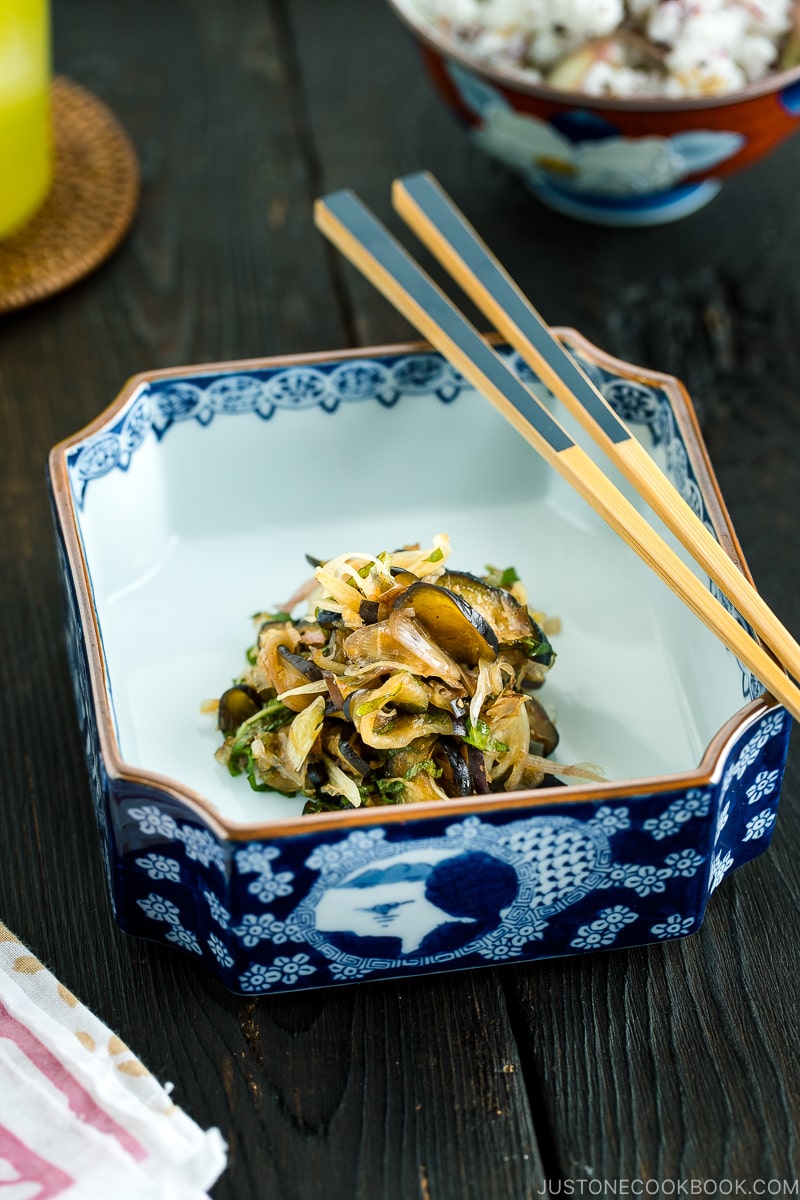
This summer I was gifted homegrown myoga by a Just One Cookbook reader Sharon who lives in Northern California. What is Myoga you may ask? Well, let’s find out and I’ll share this delicious and non-cook Eggplant and Myoga Salad (なすとミョウガの和え物). And in case you want to make the salad but can’t get Myoga, I suggested the substitutions below.
What is Myoga
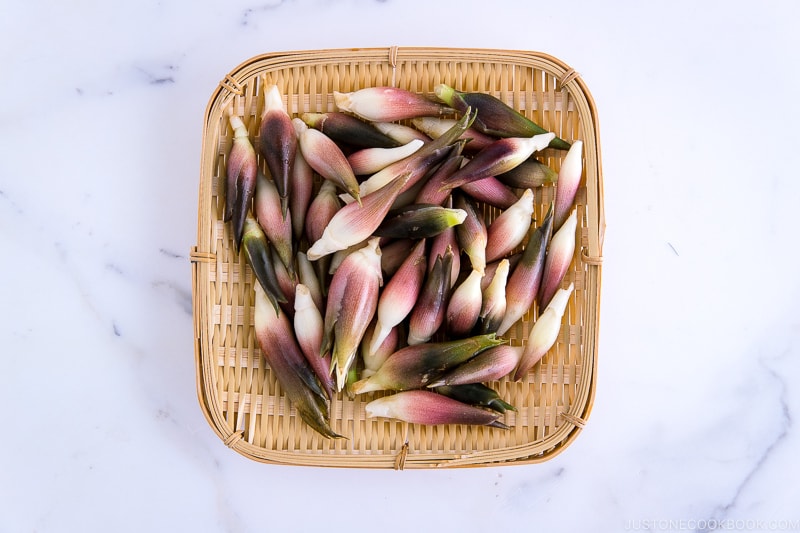
Myoga (ミョウガ, みょうが, 茗荷) is the species Zingiber mioga in the Zingiberaceae family. Native to Japan, China, and Korea, myoga is harvested for its unopened flower bud and flavorful shoot instead of its root. The flower buds are slightly larger than thumb-size and they come in striking pinkish-bronze outer layers. It is sometimes called myoga ginger or Japanese ginger.
Myoga has a very distinctive flavor, with a mild ginger overtone and zesty tang. It has a tender crunchy texture and gives a refreshing taste to the palate. That is why the Japanese believe eating myoga can help boost appetite.
In the US, you can find myoga from Japanese grocery stores like Mitsuwa or Nijiya or Tokyo Central. Or if you are looking to add another edible plant to your growing garden, check out this seller on Etsy.
Can’t Get Myoga?
The closest substitute is ginger, as myoga is called Japanese ginger. It’s even better if you can get young ginger (with pink tip) as the flavor is not too sharp and tastes milder. If you are using regular ginger, cut it into julienned strips and soak in water for 5 minutes. This will help remove a strong gingery taste.
If you are in Singapore, Malaysia, Philipines, and other SEA countries, you might be able to try it with torch ginger flower (bunga kantan). I understand that torch ginger flower has a very similar taste and uses to Myoga, so I’ll be curious to know how you like it!
Whichever substitution you decide to use, please start with a smaller amount than what I used for Myoga. They may have a stronger flavor, so taste and adjust as needed.
Eating Eggplant Raw!
Yes, you heard me right. I asked my Instagram followers if they have tried raw eggplants before and 92% said they have never tried. So this recipe would be the perfect opportunity to try it out!
To be able to eat eggplant raw, you need to remove astringency (we say Aku 灰汁 in Japanese). How do you do that? First, sprinkle salt over the eggplant to dehydrate moisture from it. The excess moisture will also grab the astringency in the eggplant. You would need to squeeze the excess moisture out.
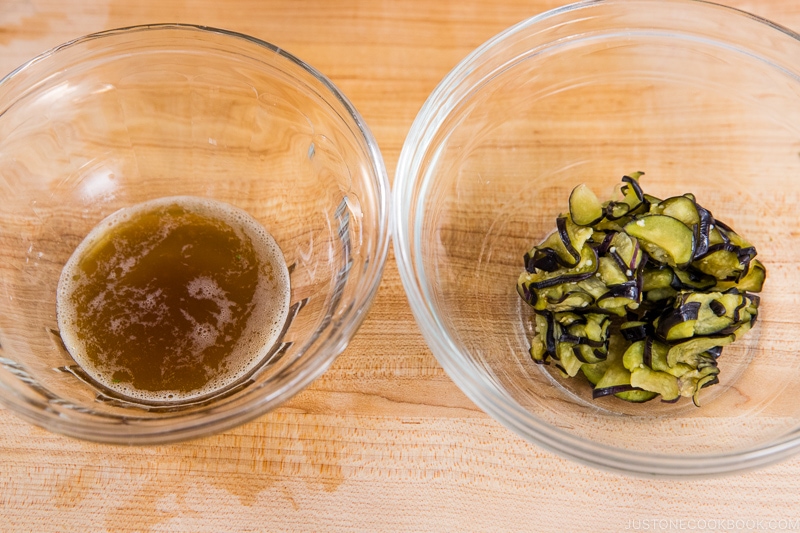
See how much Aku (astringency) came out from one Japanese eggplant? Now the eggplant is ready to eat. It has a mild taste with absolutely no bitterness. The texture is tender, a little crispy, similar to the texture of a blanched eggplant.
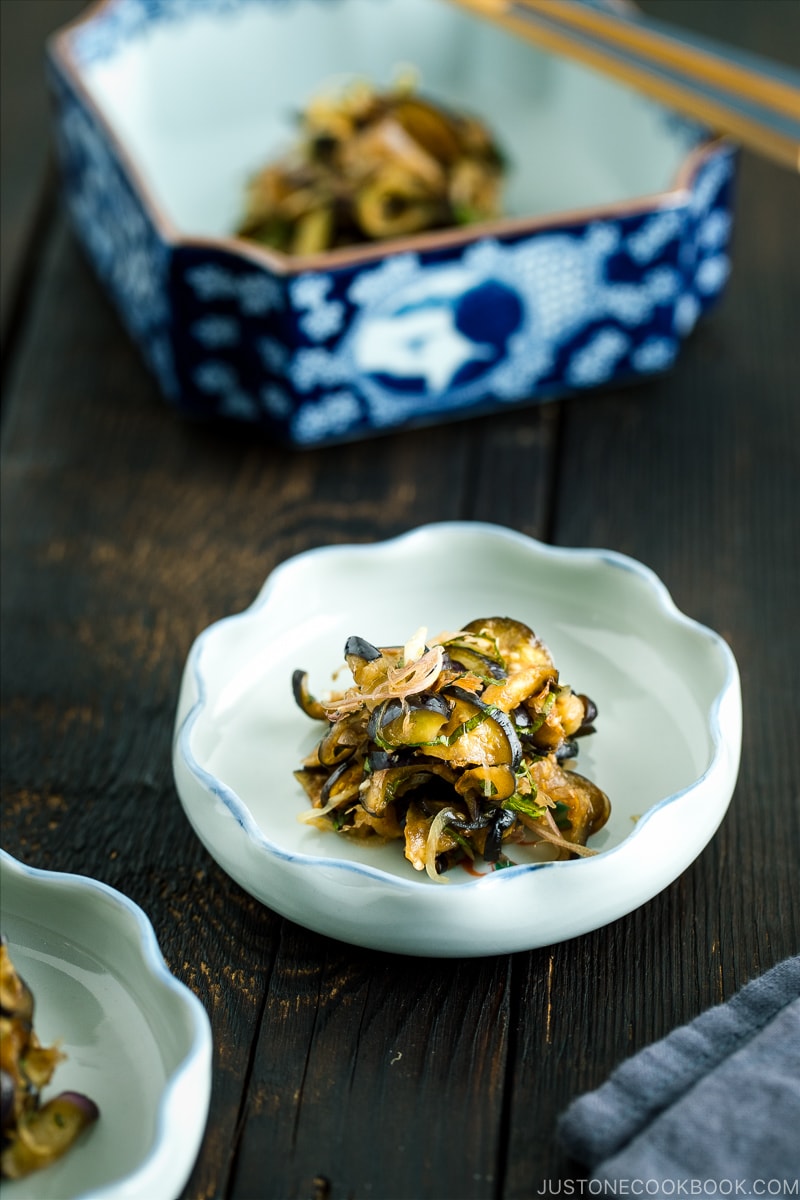
A Trio of Japanese Summer Vegetables
I know many of your backyard gardens are abundant with homegrown vegetables and herbs. This Eggplant and Myoga Salad features a trio of Japanese summer vegetables.
Veggies for the Salad
- Japanese Eggplant (or globe eggplant)
- Myoga (or young ginger or ginger)
- Shiso leaves (Korean perilla, although the taste is not exactly the same)
Seasonings for the Salad
- Sesame oil
- Soy sauce
- Katsuobushi (bonito flakes)
This simple, quick, and refreshing Eggplant and Myoga Salad is so addicting! Mr. JOC thought this is a classy Japanese dish served in a ryokan. In Japan, this dish is considered Aemono (和え物), which ingredients are dressed with seasonings or sauce.
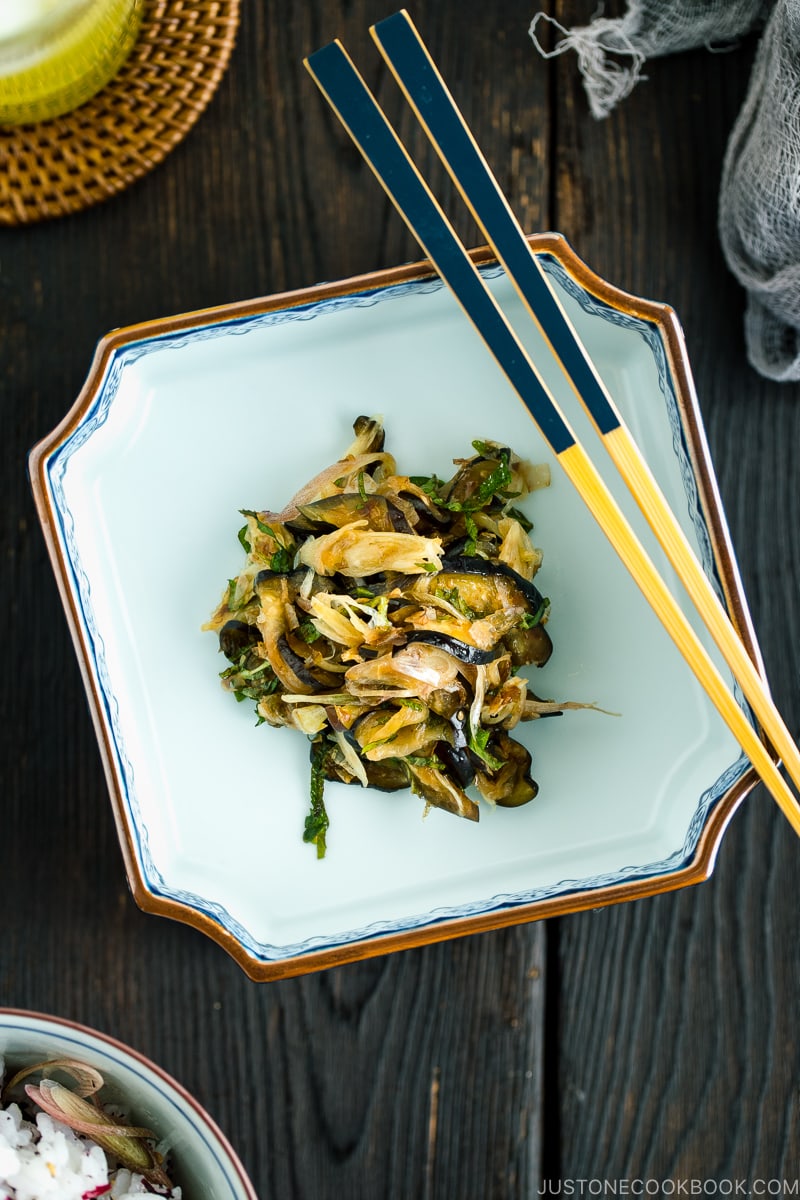
What Dishes to Serve with This Salad
Considering Eggplant and Myoga Salad is a summer dish, here are my suggestions for a quick weeknight meal!
Summer Inspired Main Dishes
Summer Inspired Noodle Dishes
- Somen Noodle
- Zaru Soba
- Cold Tanuki Udon
- Cold Curry Udon
- Hiyashi Chuka
- Hiyashi Chuka with Sesame Miso Sauce
- Oroshi Soba
Rice Bowl Donburi Dishes
I hope you enjoy recreating a taste of Japanese summer from your home kitchen!
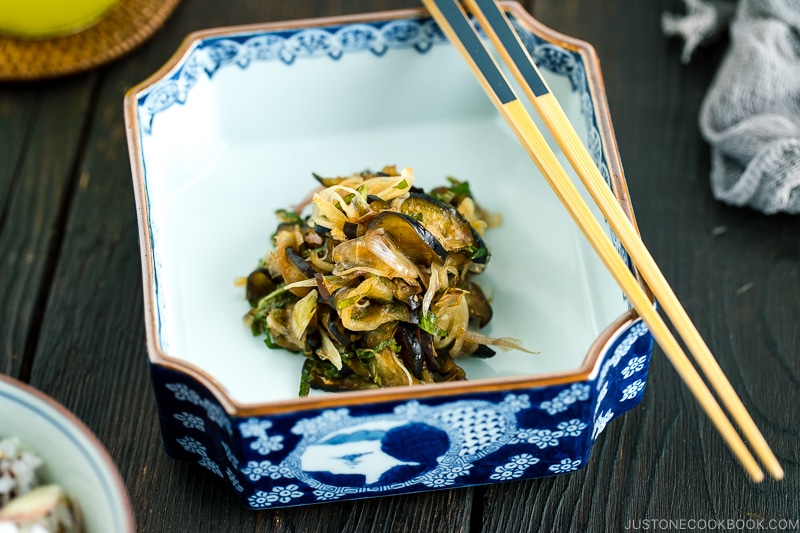
Wish to learn more about Japanese cooking? Sign up for our free newsletter to receive cooking tips & recipe updates! And stay in touch with me on Facebook, Pinterest, YouTube, and Instagram.
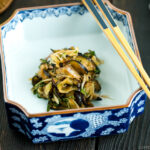
Eggplant and Myoga Salad
Ingredients
- 1 Japanese eggplant (4 oz, 113 g)
- ½ tsp Diamond Crystal kosher salt
- 3 myoga ginger (0.5 oz, 15 g; You can substitute it with a small amount of ginger, preferably mild-flavored young ginger)
- 4 shiso leaves (perilla/ooba) (Skip if you don't have shiso)
Seasonings
- 1 Tbsp toasted sesame oil
- 1 tsp soy sauce
- 4 Tbsp katsuobushi (dried bonito flakes)
Instructions
- Gather all the ingredients.
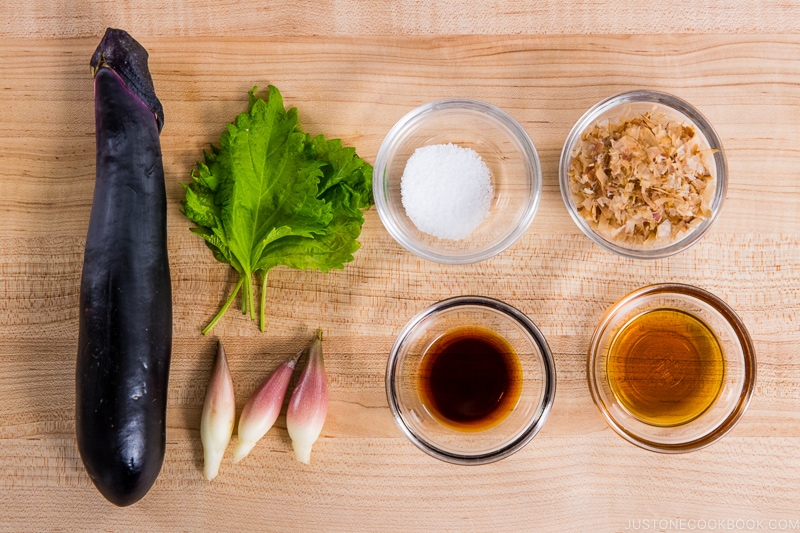
- Cut the eggplant in half lengthwise.
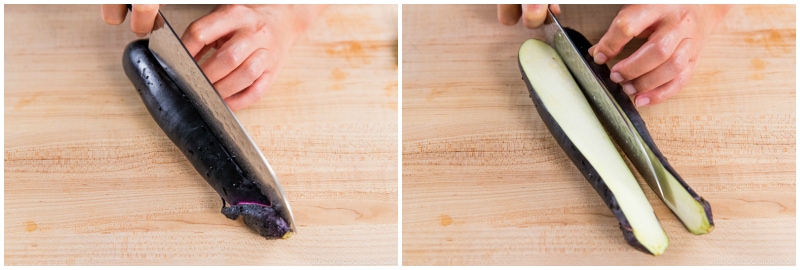
- Remove the stem end of the eggplant and thinly slice it diagonally.
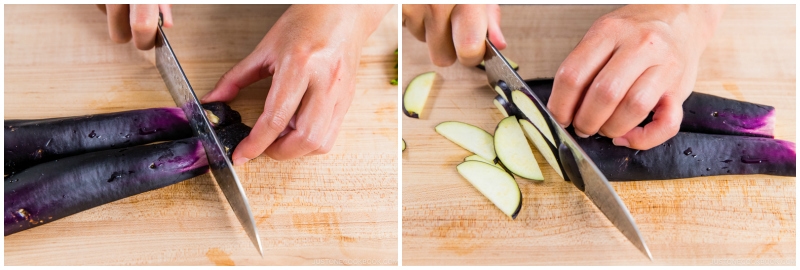
- Why? This gives the eggplant a bit larger surface than slicing it widthwise. Now sprinkle salt all over the eggplant and rub it with salt. Set aside/leave it for 10 minutes.
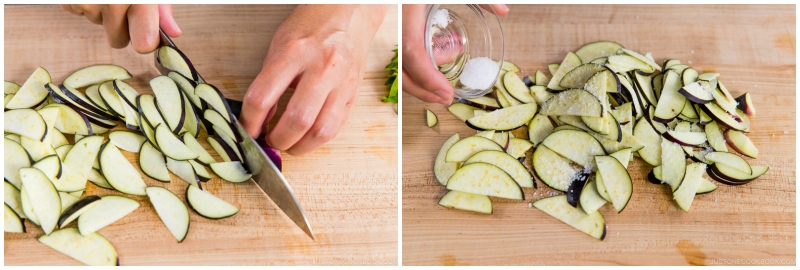
- Squeeze the eggplant to remove the excess moisture (where the astringency is). Transfer the eggplant into a medium bowl.
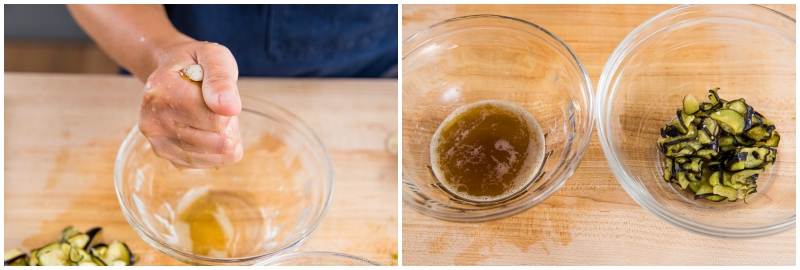
- Remove the stem end of myoga ginger and thinly slice it diagonally. If you are using regular ginger, cut the 2 thin slices into julienned strips and soak in water for 5 minutes. This will help remove a strong gingery taste.
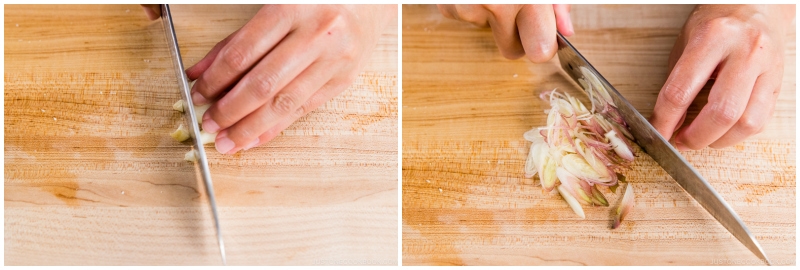
- Roll up the shiso leaves, start from the stem side to the tip, and then cut into julienne strips. Separate the chunks of shiso with hands.
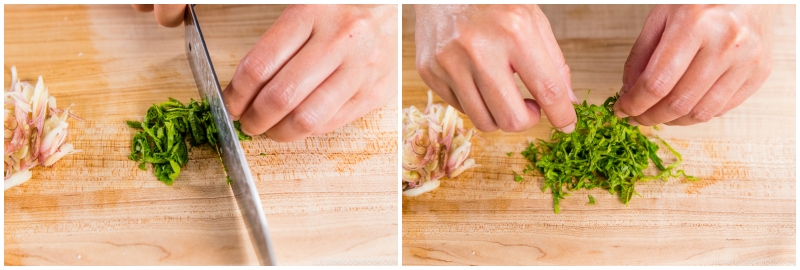
- Add myoga and shiso in the bowl along with sesame oil and soy sauce.
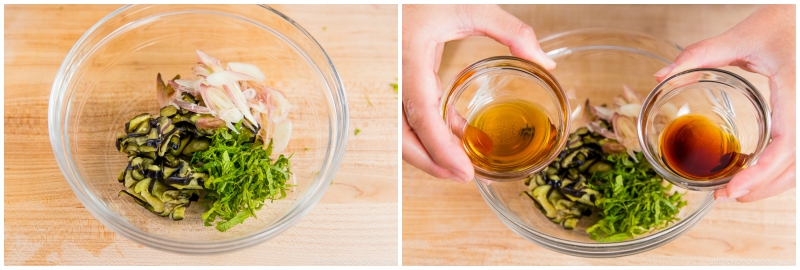
- Add katsuobushi and mix all together.
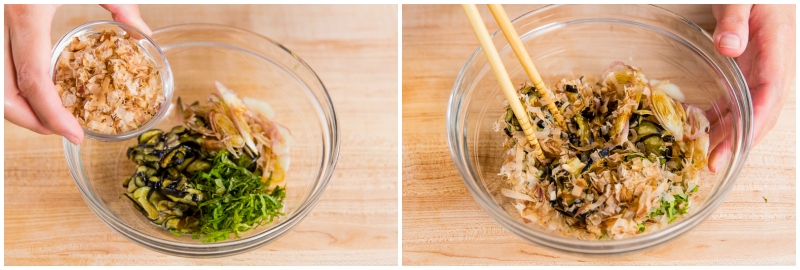
- Serve the salad in a large bowl or individual bowls. Enjoy!
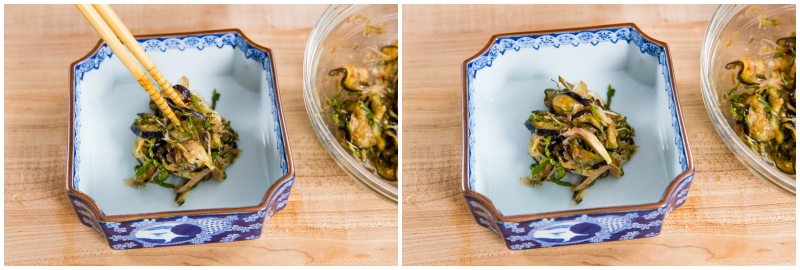
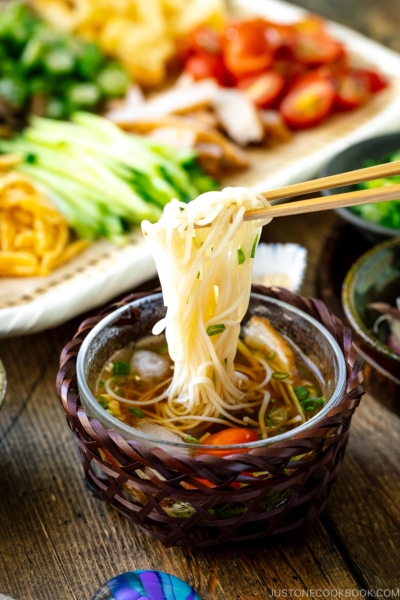
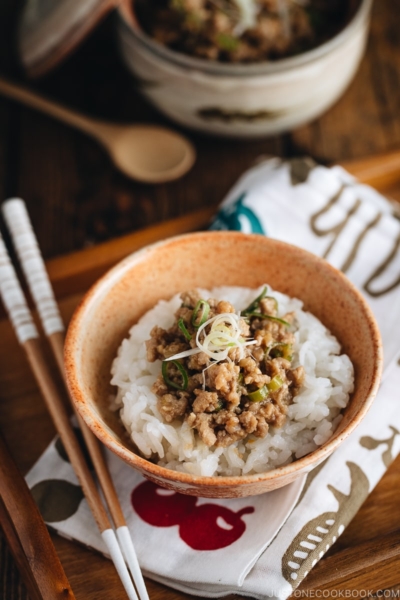
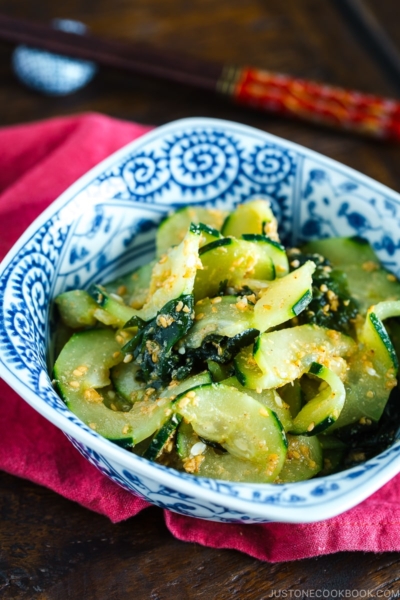
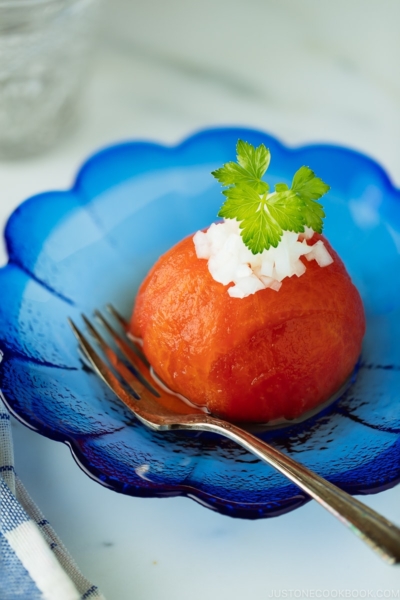




I was lucky enough to be given some home-grown Japanese eggplant (nasu) and myoga and came across this recipe. So easy and delicious!
Hello! How nice that you have both eggplant and myoga from someone’s garden! Thanks so much for trying this recipe and I’m glad you enjoyed it. 🙂
Just read the Nasu salad recipe and will attempt to make it. I have potted Myoga plants in my yard. I will try to harvest at least one. I also have Shiso in a pot. Nice ingredients.
Hi Atsuko-san! I received a lot of positive feedback from my readers who grow eggplant and shiso (and some myoga!). Hope you enjoy this recipe!
I can give this a try, one of this days.
Hi Marika! Hope you enjoy the recipe!
We have eggplant in our garden and this is a great recipe to try! I’m always interested in different ways to prepare it! Now to go to the Asian food market to look for Myoga! Thank you for your recipes!
Hi Annie! I hope you enjoy this recipe! Myoga might be hard to find, but it’s okay with a bit of ginger too. 🙂